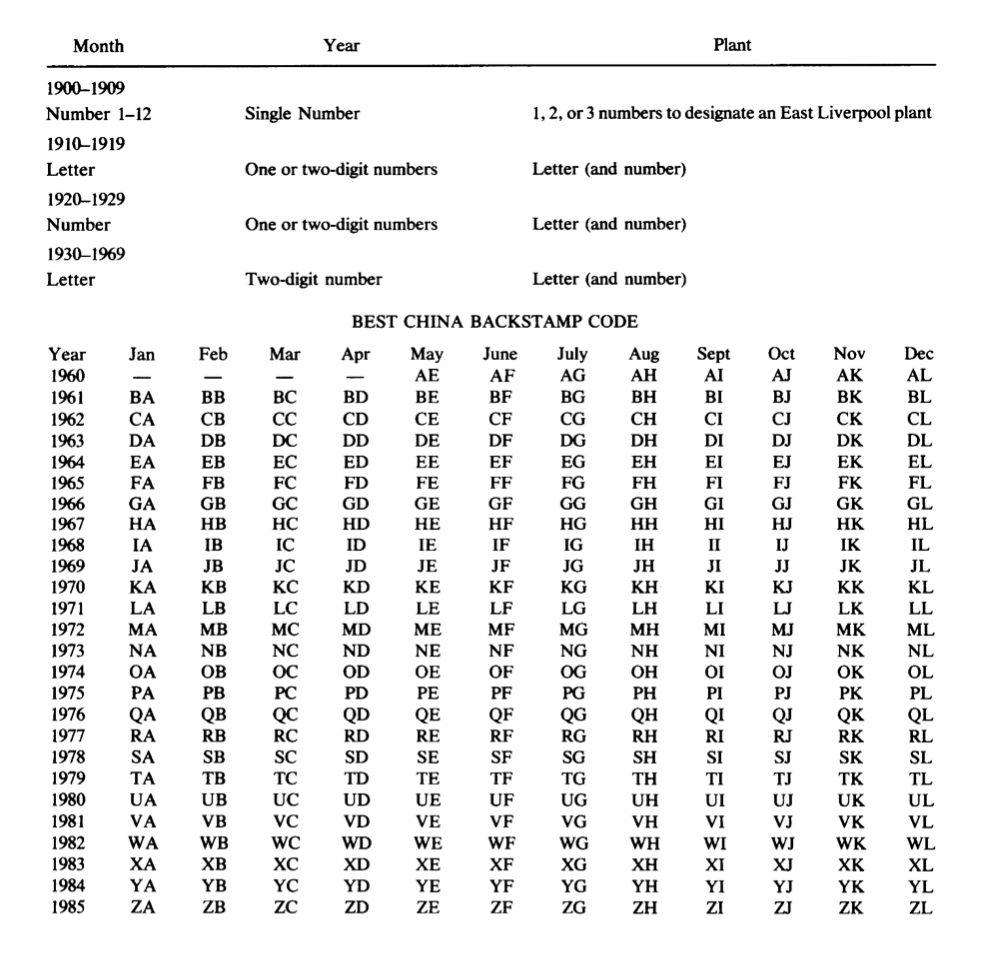Evolution of British Pottery Marks
19 March 2021Pottery marks are a dependable means by which the manufacturers, origins, production dates and so many details of the ceramics may be identified. Often, the marks include factory names or trademarks, the signatures of painters, potters or gilders and precise descriptive notes, generally set under the base of the piece. Although these pottery marks can be flagrant forgeries or misleading, manufacture marks remain valuable tool for ceramic identification. Interestingly, there is a trend of factories adopt each other’s marks or borrow signs used at some famous works at different time periods. Gradually, the characteristics of the pottery marks evolve over time. I personally found this fascinating so that I started web browsing various pottery stamps.
The ceramic marks are of three kinds – factory, workman, and pattern mark. The name or initial of the factory was usually located in a prominent place, sometimes accompanied by the mark of the workmen. There are heaps of noticeable pottery marks nationwide. British manufacture marks covered from the Middle Ages to 1850 can be roughly categorised by regions of Derby, Staffordshire, Newcastle, Coalport etc. as shown in Figure 1.
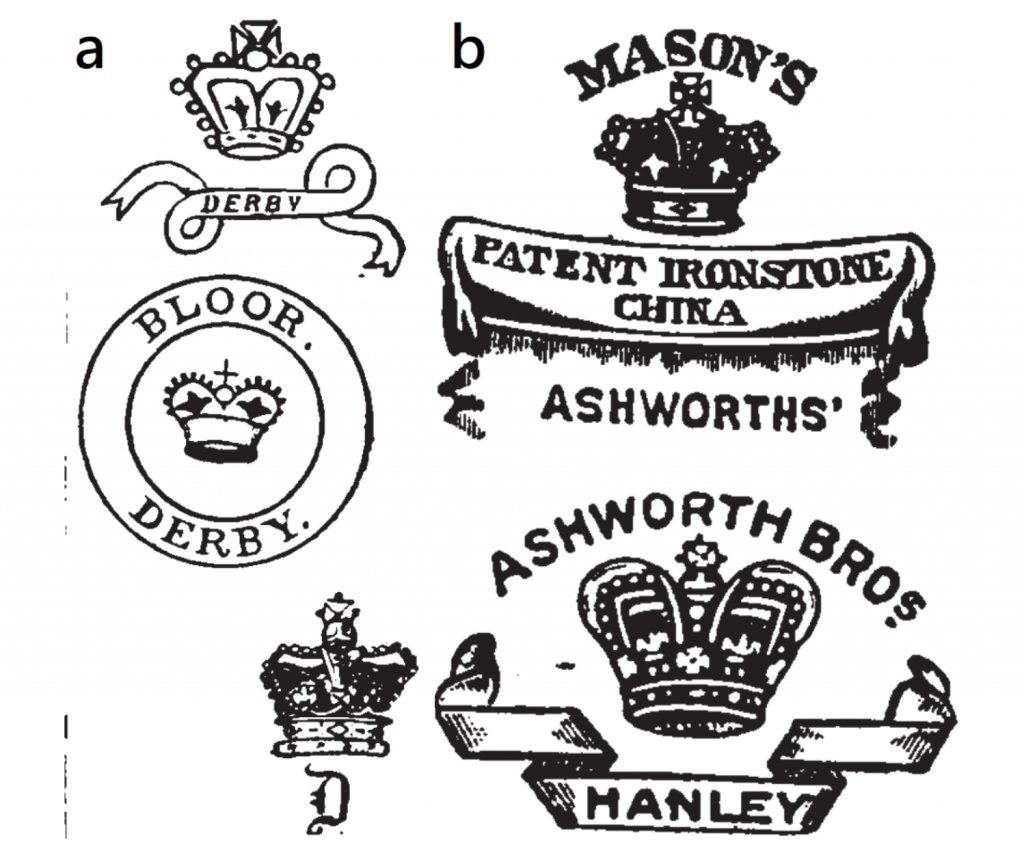
Figure 1. Pottery marks: 1a. Painted pottery marks from Derby, the mark of crown and ‘D’ was adopted during the period under the management from William Duesbury II; 1b. Pottery marks from taffordshire. The Ashworths bought up Mason’s works and rights in 1859 and add in ‘Ashworths’ thereafter (Burton and Hobson, 1909).
However, common symbols and arrows before 1850s would not be covered in here. I would simply outline the evolution of the British pottery marks. Here I particularly drew out the pottery marks from East Liverpool in this blog as it is the major ceramic centre. East Liverpool, Ohio known as the “Crockery City”, was the nation’s largest domestic producer of dinnerware, whitewares and toilet wares during the late 19th and early 20th centuries. Throughout mid to late 19th century, American potters had to confront a domestic market that had a long-standing preference for British wares. In response to this prejudice, plenty of ironstones were either marked with English-type marks or left unmarked in order to deceive the buyers. In fact, many British local potteries were then merged with the American companies in the early 20th centuries and produced uniform manufacture marks. To some extent, pottery marks embodied the history context in the ceramic industry.
How are marks applied?
a. Incised
The pottery marks, when incised, vary considerably; a different hand or a flaw into the still soft clay during manufacture, all tend to make them unrecognizable. This type of marks was usually made by small volume studio factories and would present a slight ploughed-up effect appearance as shown in Figure 2a.
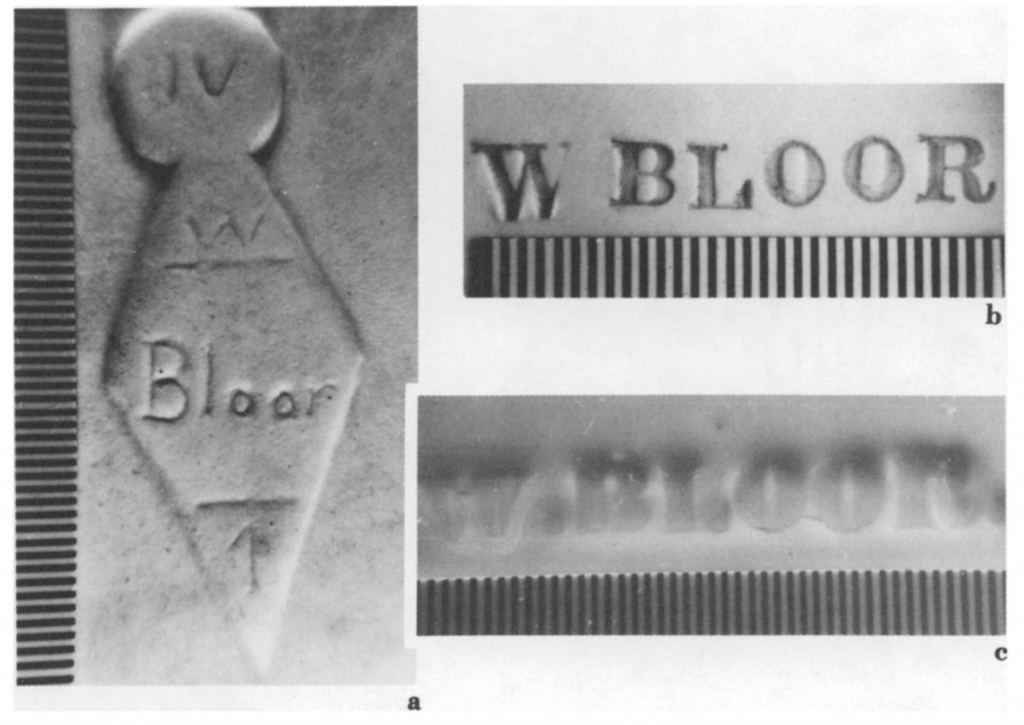
Figure 2. Pottery marks of William Bloor: 2a. Parian pitcher, 1861-1862, mark was raised and incised; 2b&c. marks were impressed (Gates and Ormerod, 1982).
b. Impressed
This type of marks would impress into the soft clay during manufacture and have a neat mechanical appearance as shown in Figure 2b&c and 3. Heedful cautions are needed as a shrinkage of the wet clay will obliterate or change the marks.
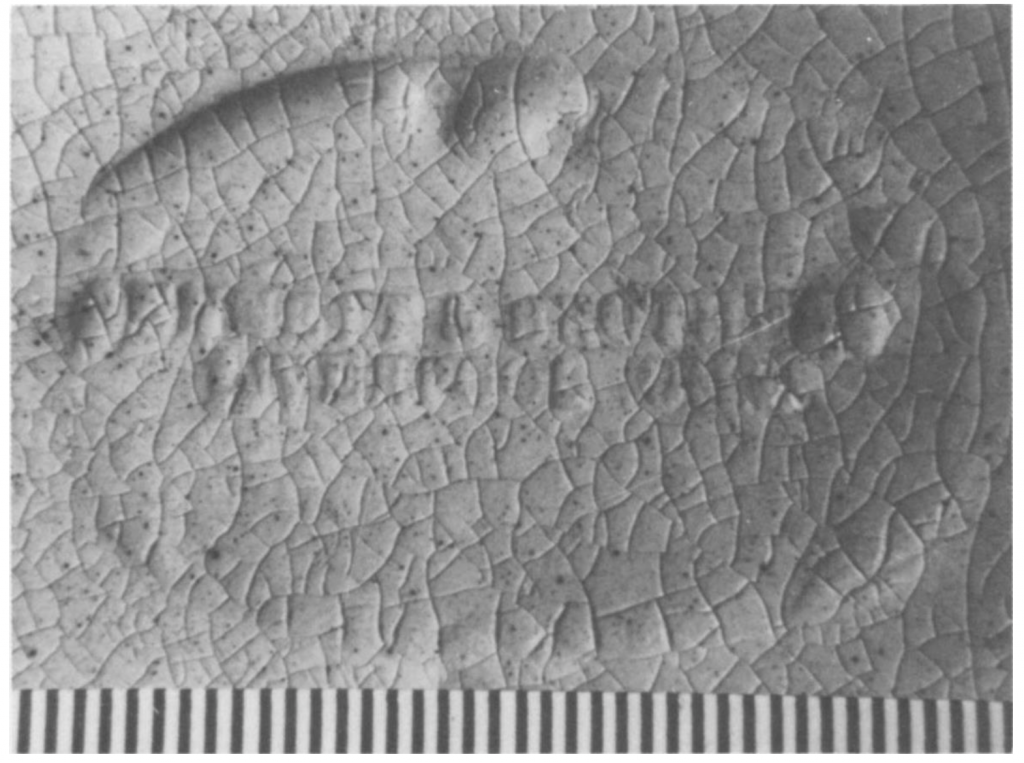
Figure 3. Bennett Brothers/James Bennett: yellow ware platter, 1841-1844, mark was impressed ‘BENNETT & BROTHERS/LIVERPOOL OHIO’. Note: James Bennett established the first pottery in East Liverpool in 1839 (Gates and Ormerod, 1982).
c. Painted
Like the incised marks, the painted marks, as shown in Figure 1a, must be carefully brushed over the glaze for the time being ornamented.
d. Printed
Printed marks are transferred from engraved copper tablets for the time being decorated as shown in Figure 4. This also need carefully handled as the printed marks were often blurred by the action of the firing or running of the enamel.
Dating British pottery marks
There are various types of pottery marks and interesting meanings associated. Here, I was not aimed to provide a guide for pottery identification but briefly integrated and categorised the pottery marks across different periods.
1. Late 1870s -1880s:
There was a prevalent practice of using familiar British symbols such as eagle, and unicorn and lion in combination with a coat of arms, a shield or a heraldic escutcheon. Below showed the common types of marks during this period.
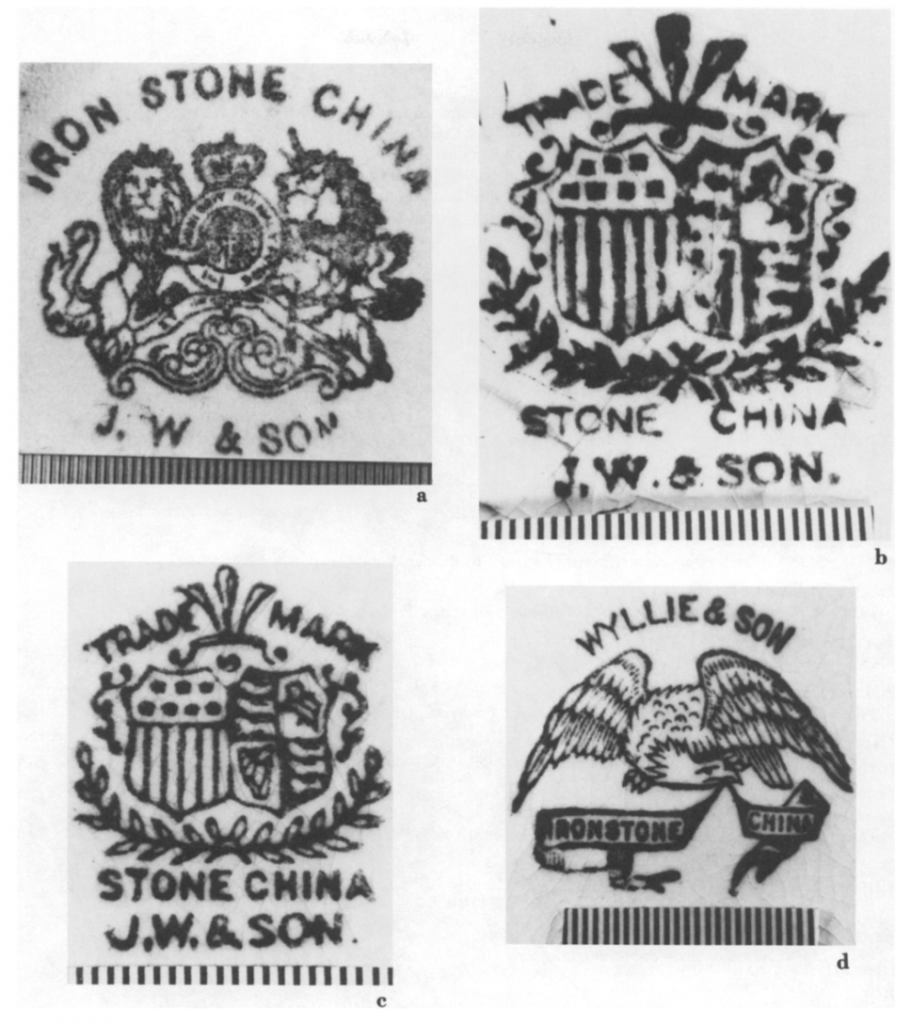
Figure 4. Pottery marks from John Wyllie and Son Company: 4a. Ironstone table and toilet ware, 1875- ca. 1885. Printed: A lion and a unicorn in combination with a coat of arms; 4b & 4c. Ironstone table and
toilet ware, 1875-ca. 1888. Trademark of two shields with two branches mirrored; 4d. Ironstone table and toilet ware, 1875-1893. Printed: Ironstone china (in ribbon) with eagle logo (Gates and Ormerod, 1982).
Notes to the inclusion of the word ‘Trade-Mark’:
The inclusions of the word ‘Trade-Mark’ denote a post-1875 date, when the British Merchandise Marks Act was applied to American wares which aimed to protect British trademarks from misuse or fraud.
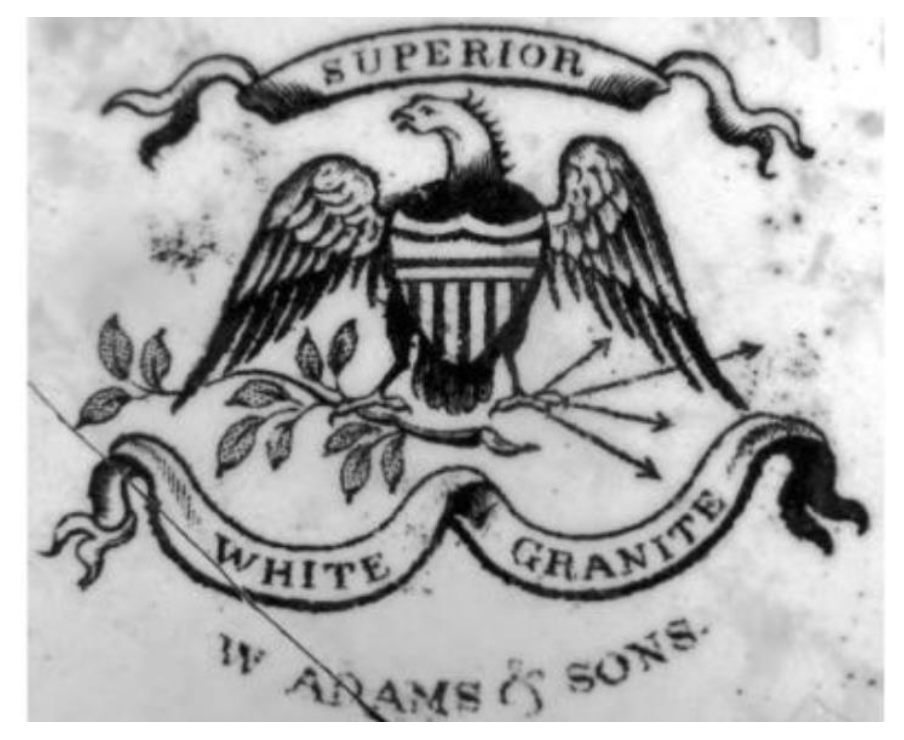
Figure 5. Pottery mark from Adams, William and Sons Company: Printed: SUPERIROR (in upper ribbon), eagle with shield body holding arrows and a branch, WHITE GRANITE (lower ribbon) (Gibson, 2016).
Notes of British Royal Coat of Arms on Pottery Marks:
The Royal Arms may only be legitimately used by factories which are the holders of a Royal Warrant. Nonetheless, some potters and foreign firms, who were not the Warrant holders but sought to get some sense of value and importance, imitated the Arms or designed some similar motifs as part of their marks.
2. 1880s – 1910s:
During this period, the pottery marks tended to be either very simply using the name of the potters in shape in script or block letters, or very elaborate and decorative, employing sophisticated and delicate shapes of designs.
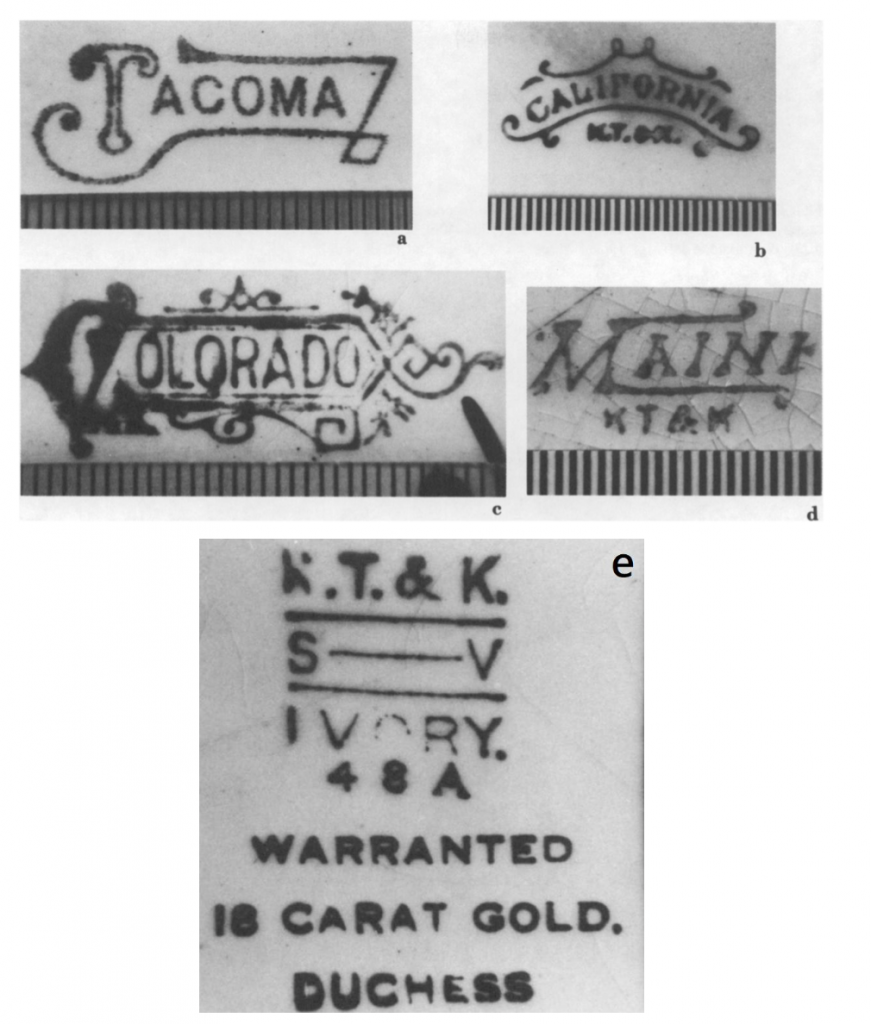
Figure 6. Pottery marks from the firm of Knowles, Taylor and Knowles, (K.T. & K.): 6a-d. toilet ware and table wares ca. 1885-1918. Simple printed marks incorporating the name in the pattern; 6e: Inscription mark. S-V stands for Semi vitreous dinnerware, ca.1925 (Gates and Ormerod, 1982).

Figure 7. Stubbs Bros and John Chew Ltd: Pottery name incorporated in a globe designed pattern, reads ‘TRENT/ J CHEW’S/ CHINA/ LONGTON’ (Birks, 2005).
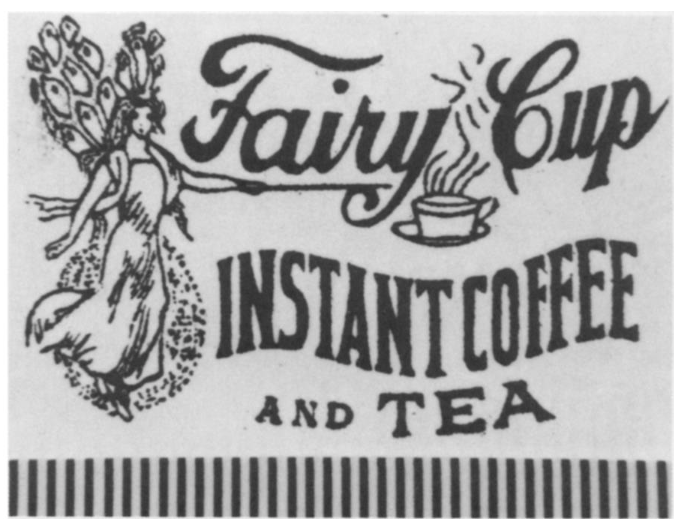
Figure 8. Saxon China Company: Semi-vitreous ware, 1920. A more elaborate modern stamp (Gates and Ormerod, 1982).
3. 1910s – present day
The manufacture marks dated during this period are, as a rule, either employed a highly stylized motif, or very plain and straightforward design of potters’ initials. The contemporary marks are tended to be less decorative and artistic than the antecedents and show no attempt at embellishment.

Figure 9. Arthur Wood & Son (Longport) Ltd: 9a&b. Plain marks inscribe potter’s initial and pottery origin. ‘A. W.’ is for Arthur Wood and the ‘L’ is for Longport (Birks, 2005).
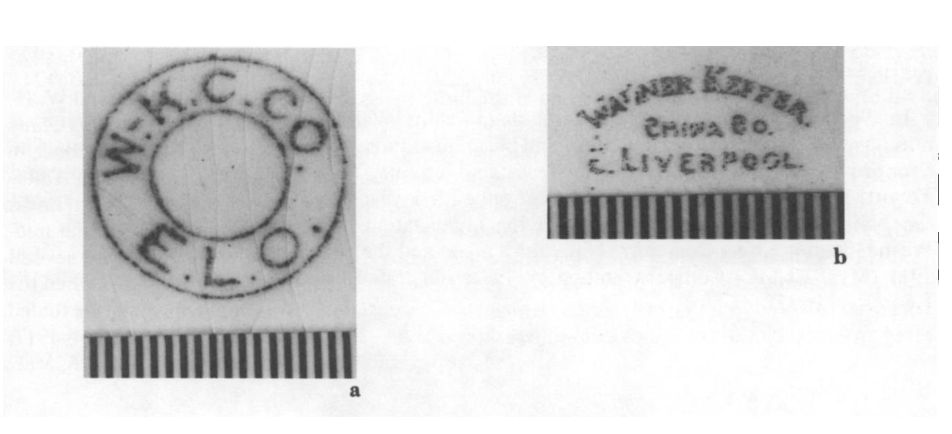
Figure 10. Warner-Keffer China Company: 10a. Stamp of potters’ initial and the initial of production place East Liverpool. Ohio (E.L.O), 1908-1911; 10b. Decal inscribed the potter’s name and production place, 1908-1911 (Gates and Ormerod, 1982).
It is worth mentioning that an American pottery, the Homer Laughlin China Company, in East Liverpool has devised a coding system to date the month, year and plant of the manufacture as shown as below.
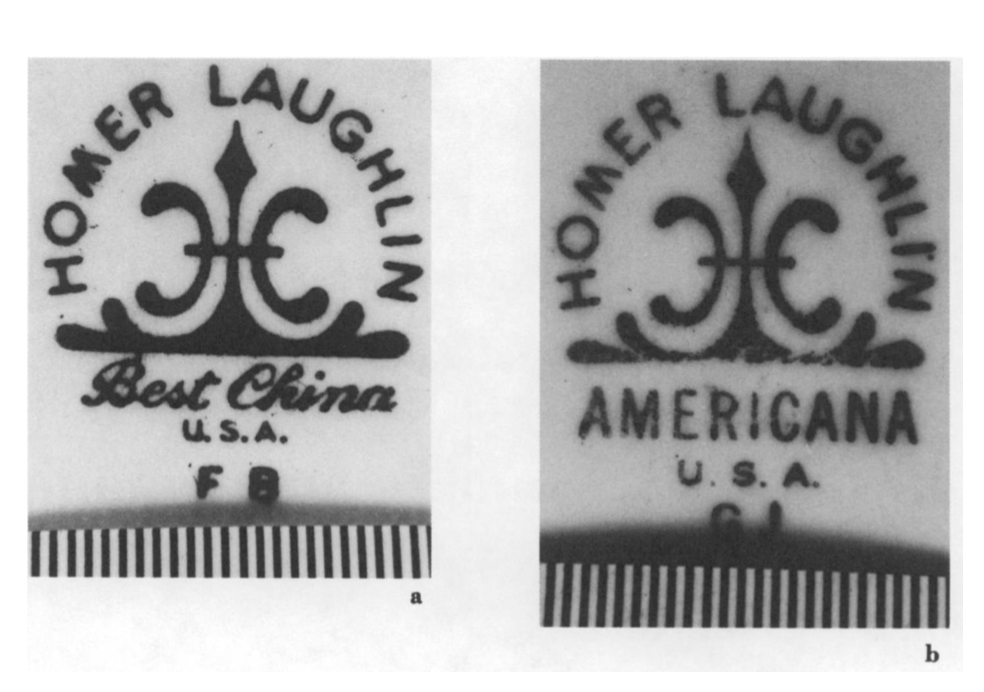
Figure 11. Homer Laughlin China Company’s ware dating system: 11a. hotel china, 1960-present, ‘FB’ indicates it was produced in February 1965; 11b. hotel china, 1960-present, ‘GJ’ indicates it was produced in October 1966 (Gates and Ormerod, 1982).
Other types of marks: Royal Pottery Marks
As identified before, the use of the British Royal Coat of Arms indicates a company as the legit holder of a Royal Warrant. Likewise, the inclusion of word ‘Royal’ in a company’s title or trade name suggests the same and mostly dated in the late 19th century, if not a 20th century dating.
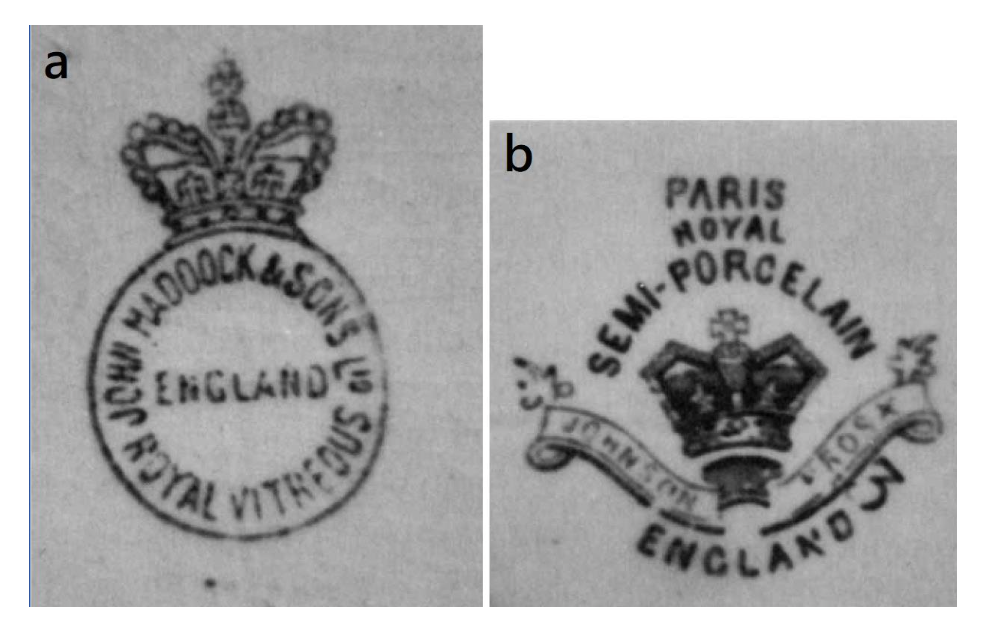
Figure 12. Royal potter marks in England. 12a. Printed mark of the Royal Vitreous from John Maddock & Sons, with crown at the top and ‘England’ inscribed in the centre, ca. 1880-1896; 12b. Printed mark of semi-porcelain from Johnson Bros (in ribbon), England (at bottom) ca. 1900 (Worthy, 1982).
Note of inclusion of the word ‘England’:
Contrary to popular belief, the inclusion of the word ‘England’ in the pottery marks does not certainly represent that the potteries were made after 1891, when enacted the U.S. McKinley Tariff Act that protects American firms by required the country of origin to be added to imported items and placing high tariffs. Some marks also included ‘England’ on the pottery produced before 1891. That being said, the absence of the word ‘England’ can denote the pre-1891 date. And the phrase of ‘Made in England’ came even later, in the 20th century.
Note of ‘By Appointment…’
After granted the warrant, it is usual that underneath the coat of arms or the heraldic escutcheon would appear the phrase ‘By Appointment to …’ followed by the tile and name of the royal customers and included by what products.
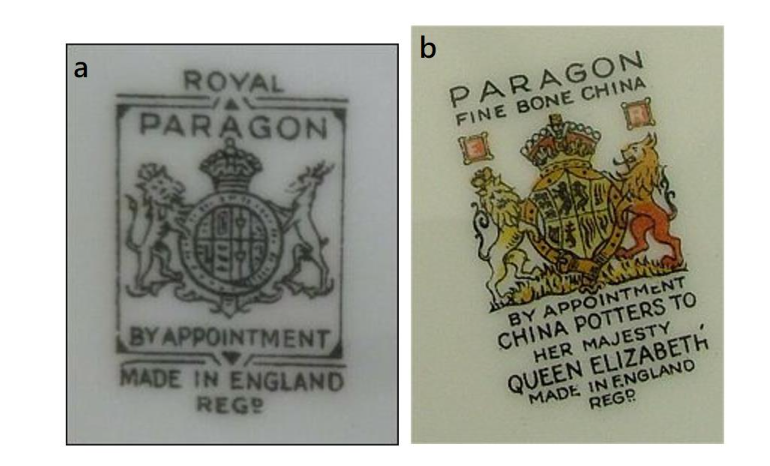
Figure 13. Royal pottery marks of Paragon China Ltd.: 13a. ‘Royal Paragon’ was stated on top of the coat of arms while ‘By appointment’, ‘Made in England’ and ‘Regd’ were stated below; 13b. Below the coat of arms, it included ‘By appointment China Potters to Her Majesty (title) Queen Elizabeth (name of the royal customer)’ (Birks, 2005).
I hope everyone enjoyed the reading. Welcome to share any thoughts and I am always open to discuss the interesting content and stories behind pottery stamps!
References
Birks, S. (2005). Pottery – Ceramic Trade Marks [online] The potteries. Available at: http://www.thepotteries.org/mark/ [Accessed 13 Mar. 2021].
Burton, W. and Hobson, R.L. (1909). Handbook of marks on pottery & porcelain. [online] London: Macmillan and Co., Limited. Available at: https://library.si.edu/digital- library/book/handbookofmarkso00burt.
Cessford, C. (2017). Corporate Branding and Collegiate Coats of Arms as Logos: Marked Ceramics and the University of Cambridge. International Journal of Historical Archaeology, [online] 22(4), pp.883–904. Available at: https://link.springer.com/article/10.1007/s10761-017-0452-z#Sec7 [Accessed 8 Mar. 2021].
Gaimster, D.R.M. and Cowell, M. (1988). Post-Medieval Ceramic Stove-tiles bearing the Royal Arms: Evidence for their Manufacture and Use in southern Britain. Archaeological Journal, 145(1), pp.314–343.
Gates, W.C. and Ormerod, D.E. (1982). The East Liverpool pottery district: Identification of manufacturers and marks. Historical Archaeology, [online] 16(1-2), pp.1–323. Available at: https://www.jstor.org/stable/25615422?seq=1#metadata_info_tab_contents [Accessed 13 Mar. 2021].
Gibson, E. (2016). Ceramic Makers’ Marks. [online] New York: Routledge. Available at: https://books.google.co.uk/books?hl=en&lr=&id=qdlmDAAAQBAJ&oi=fnd&pg=PP1&dq=british+Royal+c eramic+manufacturer+marks&ots=qTls8FJjl4&sig=j1n3X1Ptfw6iiDn1syQX7BYyaF0&redir_esc=y#v=onep age&q=british%20Royal%20ceramic%20manufacturer%20marks&f=false [Accessed 13 Mar. 2021].
Worthy, L.H. (1982). Classification and Interpretation of Late-Nineteenth- and Early-Twentieth-Century Ceramics. In: Archaeology of urban America: the search for pattern and process. [online] New York: Academic Press, pp.329–360. Available at: https://www.sciencedirect.com/science/article/pii/B9780122149801500238 [Accessed 13 Mar. 2021].
- March 2024 (1)
- December 2023 (1)
- November 2023 (2)
- March 2023 (2)
- January 2023 (6)
- November 2022 (1)
- October 2022 (1)
- June 2022 (6)
- January 2022 (8)
- March 2021 (2)
- January 2021 (3)
- June 2020 (1)
- May 2020 (1)
- April 2020 (1)
- March 2020 (4)
- February 2020 (3)
- January 2020 (5)
- November 2019 (1)
- October 2019 (1)
- June 2019 (1)
- April 2019 (2)
- March 2019 (1)
- January 2019 (1)
- August 2018 (2)
- July 2018 (5)
- June 2018 (2)
- May 2018 (3)
- March 2018 (1)
- February 2018 (3)
- January 2018 (1)
- December 2017 (1)
- October 2017 (4)
- September 2017 (1)
- August 2017 (2)
- July 2017 (1)
- June 2017 (3)
- May 2017 (1)
- March 2017 (2)
- February 2017 (1)
- January 2017 (5)
- December 2016 (2)
- November 2016 (2)
- June 2016 (1)
- March 2016 (1)
- December 2015 (1)
- July 2014 (1)
- February 2014 (1)
- January 2014 (4)
